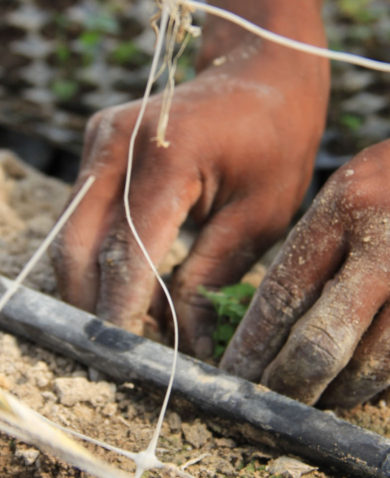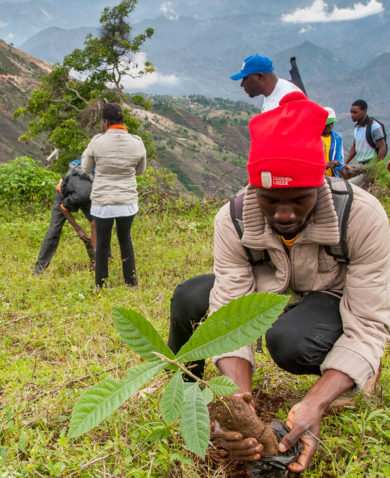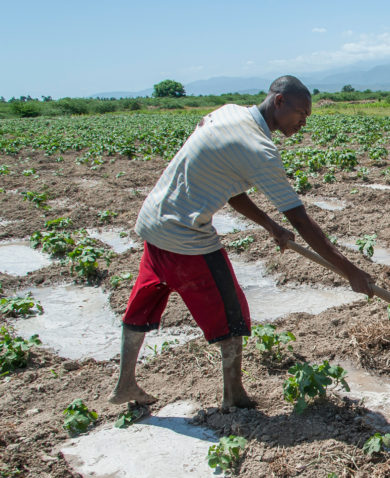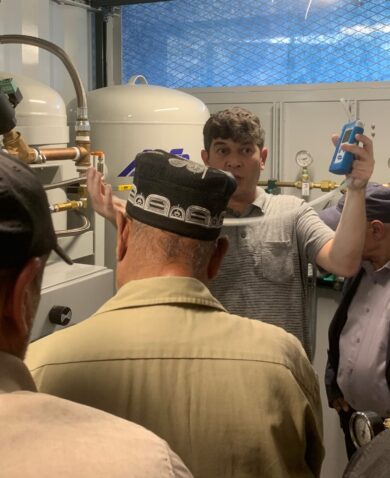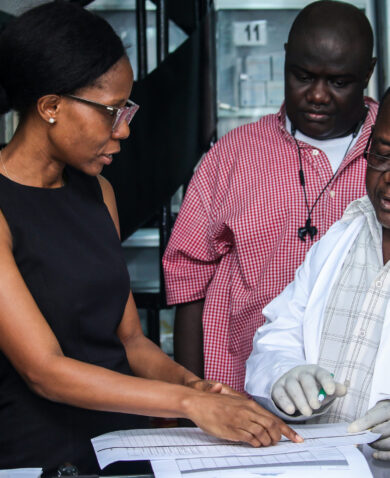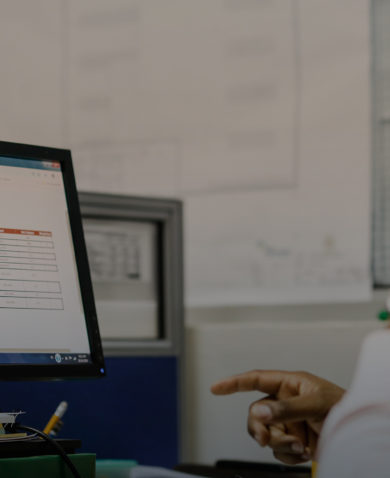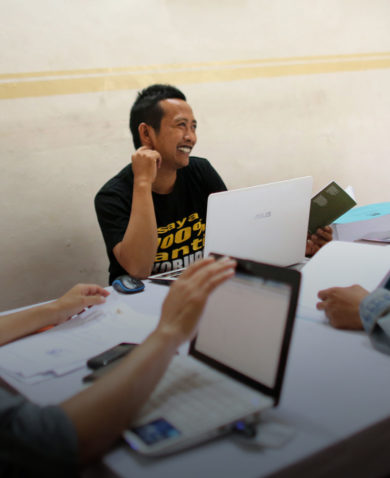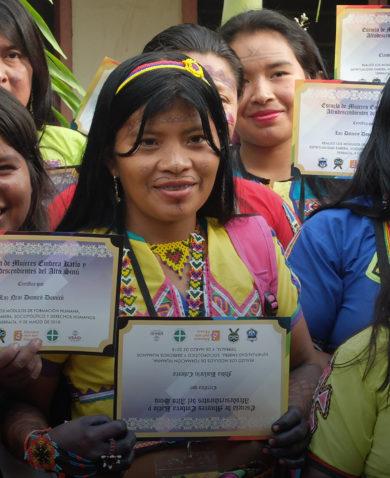
3 Questions with Garrett Dorer about Remote Management in the Era of COVID-19
April 23, 2020 | 4 Minute ReadWith development project staff and partners working remotely and in many cases scattered across the globe due to the COVID-19 pandemic, how do we ensure project continuity and staff cohesion? Garrett Dorer provides practical recommendations for remote management during this challenging time.
While most development projects use some form of remote management — U.S.-based home offices oversee project offices, main offices in capitals oversee satellite offices, and teams are distributed across multiple countries (e.g., FEWS NET) — the COVID-19 pandemic presents uncharted territories for many in the global development sector.
Travel and movement restrictions, work from home orders, and expatriate evacuations caused by COVID-19 reflect an extreme example of remote management. Nearly all Chemonics’ projects worldwide are currently “working from home” or are under severe movement restrictions, and many expatriate staff have been evacuated.
In response to the pandemic and to help Chemonics staff and our development colleagues and partners navigate this unprecedented time, we asked Garrett Dorer to share a few lessons learned from his remote work management experiences as well as some creative solutions currently being tested by Chemonics’ projects.
1) Leadership involves formal emails, meetings, and updates along with informal communications like chats over coffee or a quick hello. How do you recommend replacing important, face-to-face and informal interactions in a remote environment?
I check in with my team leaders over Skype or WhatsApp every morning and encourage them to create online groups to foster informal communication like quick work updates and questions, interesting articles, and even the occasional joke with their teams. We also touch base at the end of the day, as we would when leaving a physical office space. When having meetings, we use video as much as possible, accounting for bandwidth challenges. Video allows us to see one another and tends to lower distractions and increase efficiency.
Chemonics projects are exploring other creative solutions. Our chiefs of party are sharing short video updates on project priorities and policies; sending quizzes over Skype to keep staff engaged; challenging staff with daily online team-building activities. Some projects are using this time to encourage staff training, and many hold virtual birthday and other celebrations to maintain team cohesion. These techniques are more difficult when team members are in different time zones, and we always try to respect working hours and family and personal time.
2) How do you maintain project activities and operations with remote management during crises?
We have ensured that team members have the right equipment to work from home depending on the country, including smartphones, back-up generators, and, in some cases, satellite or alternative Internet connections. Such considerations are crucial in situations when work from home may be required for months, as is training in Internet security tailored to remote work situations and project- and country-specific security threats.
If physical signatures are required for banking or other functions, it may be necessary to designate a single decision-maker in a location with limited delegation of authority. As part of this delegation, extra training or adjusted roles and responsibilities may be required to maintain an acceptable segregation of duties.
Other roles and reporting responsibilities can also be creatively adjusted. For example, one Chemonics project is using drivers and other support personnel to conduct phone surveys while at home. Another is using the entire staff to collect information on the status and impact of COVID-19 restrictions on the economy to better inform the project’s responses.
Additionally, Chemonics projects are working closely with donors and partners to adjust their activities to the new reality. For example, one project adjusted a grant to address the increase in gender-based violence under stay-at-home orders. Several education projects are adjusting activities to foster online learning, with one adapting distance learning materials to radio where there is poor Internet access for children. Business and job creation projects are exploring online commerce solutions, and other projects are conducting emergency procurements for needed supplies for their partners, particularly in the health and emergency response sectors.
3) In most cases, we use in-person site visits to reduce compliance risk. How do you navigate the challenges of remotely verifying grantee deliverables, procurement integrity, and other steps in the project implementation process?
When remotely managing activities, our teams have designed verification procedures into grants. For example, we require grantees to send pictures with geographical information and timestamps. We sometimes require them to publish plans publicly on Facebook or another outlet, so that the community itself can inform the project if activities don’t happen. For training, stipend recipients, and direct beneficiaries, we have requested participant lists with phone contacts and have randomly called to verify that they received the assistance or attended the training. In all cases, we try to use multiple sources of information and maintain segregation of duties in the activity verification and approval process.
For procurement integrity, we encourage transparency through the public announcement of tenders, field reviews attended by multiple parties, and sometime ‘secret shoppers’ to verify price information. Our teams have also sampled and checked with vendors to ensure that they indeed submitted offers.
Can we ask a bonus question in light of recent events? The global pandemic, stay-at-home orders, challenges dealing with work and family, evacuations, and many other factors generate greater stress among project staff and leadership. How do you recommend supporting remote staff in times of stress?
Chemonics’ Employee Assistance Program provides a range of mental health and personal resilience options for individual staff remotely. Working in extremely high-stress environments, I have found such resilience programs essential for my teams and for me. That said, some staff and leaders are reticent to use these services due to cultural and personal perspectives about mental health. I find it beneficial to organize online group sessions in topics such as stress management, change management, mindfulness, and other topics. Through these sessions, staff become more comfortable with individual providers, lowering the barriers to entry for individual services. Project leadership should also tend to their own mental health and signs of burnout.
One Chemonics project is conducting online polls to gauge staff morale, asking such questions as “How are you feeling,” “Are you struggling with isolation,” and “What types of motivation helps to alleviate isolation?” Answers are helping project leadership keep a pulse on project morale and identify ways to respond effectively. Most projects are providing flexible time for staff with children at home and other commitments, and some projects have been forced to adjust communication and work schedules to suit unreliable electricity and Internet connections.
In times like these, leaders and projects must remain flexible, innovative, and empathetic as their teams and implementing partners navigate and adjust to this “new normal.” While it can be complex, we have found that teams often find creative solutions to achieve their goals even under extreme remote management or work-from-home situations.
Christina Schultz, Joshua Owens, and Chemonics’ Peace, Stability, and Transition Team contributed to this post.
Posts on the blog represent the views of the authors and do not necessarily represent the views of Chemonics.







